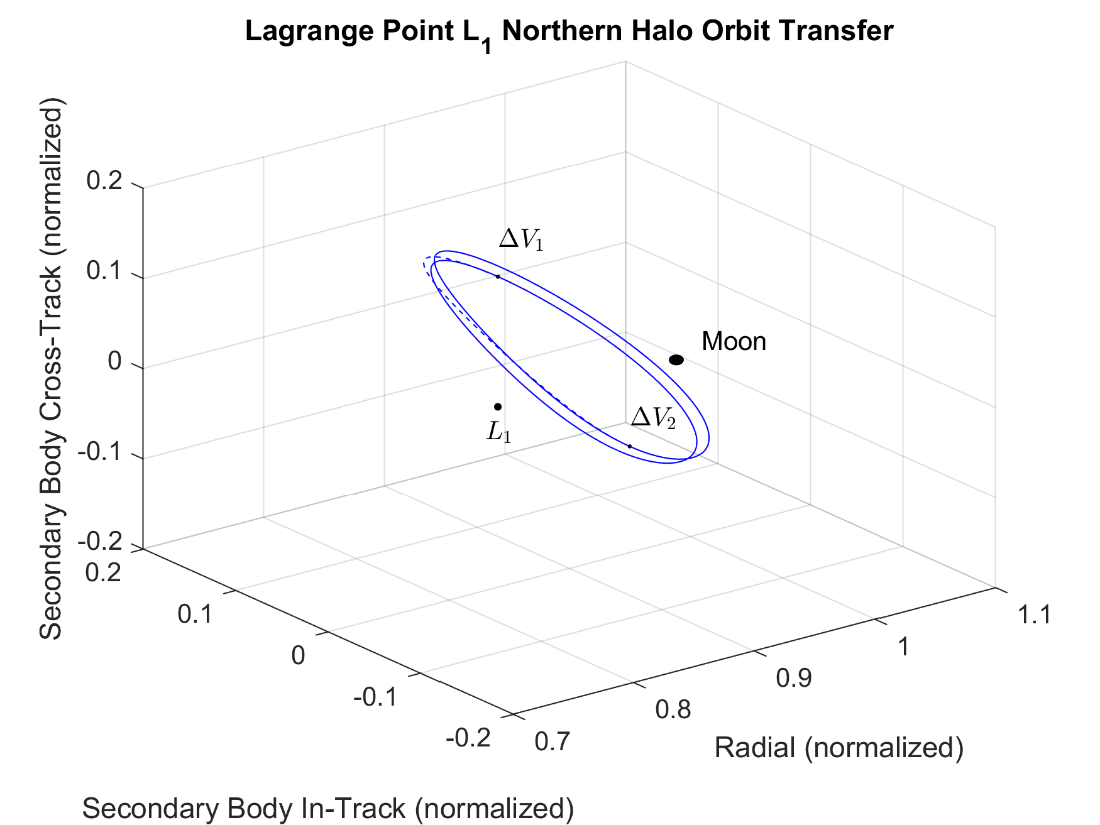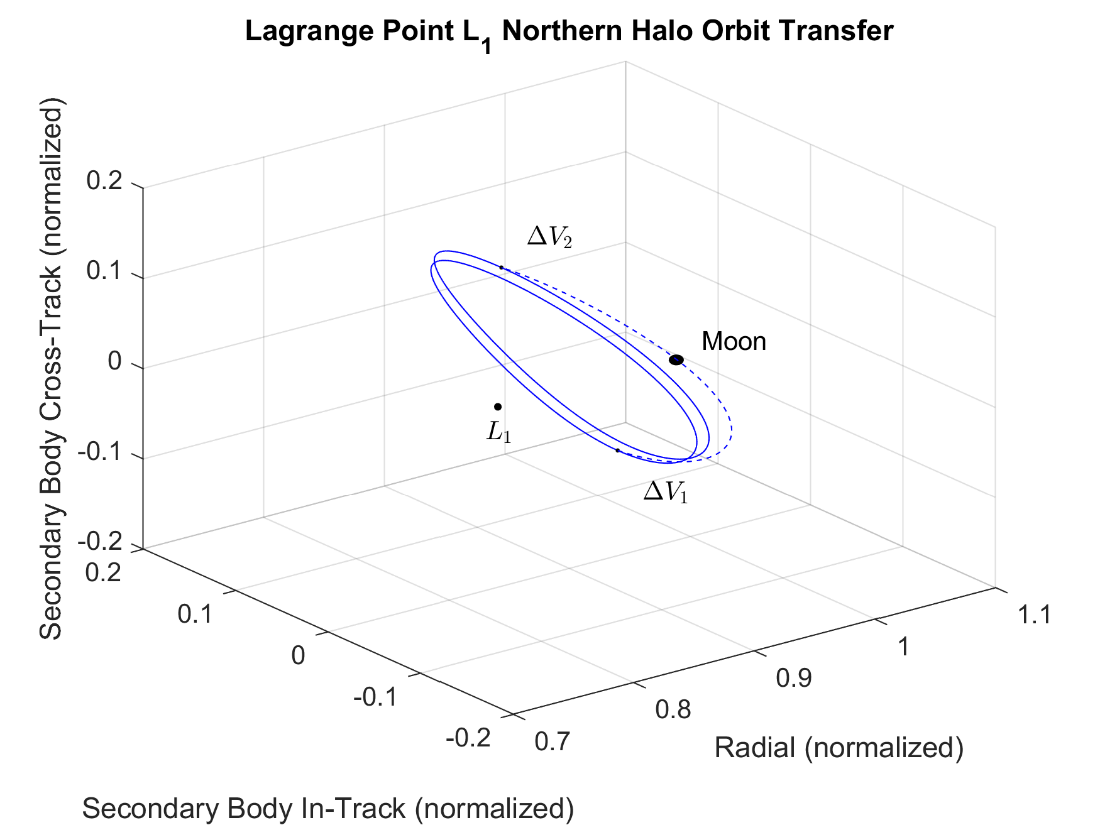Welcome to Spacetime with Brandon!
Cislunar Relative Motion Orbital Mechanics
Halo Periodic Orbit Transfers
Tranfsers between periodic orbits can be made whena spacecraft intends to transition from one periodic orbit to another. This can become especially useful when attempting to enter a large periodic orbit from GEO as there may not be a feasible insertion trajectory within fuel limits. In some cases, it may be more fuel efficient and overall simpler if raising an orbital radius from GEO, inserting into a small periodic orbit trajectory, then gradually increasing the size of the periodic orbit to the desired size.
Below shows an example northern halo orbit transfer from an orbit with an apogee of 0.940 to an orbit with an apogee of 0.950. When transferring from one northern halo periodic orbit to another, there are several burn options available such as conducting an initial burn at perigee of the initial orbit and a final burn at apogee to enter the final orbit or conducting an initial burn at apogee of the initial orbit and a final burn at apogee to enter the final orbit.
Perigee to Apogee Burn
Below shows the first case where a transfer trajectory is initiated at the perigee of the initial orbit and the final burn occurs at the desired apogee of the final orbit as shown in Figure 11-1. In this case, the initial burn is in both the radial and in-track directions.

Figure 11-1: Periodic orbit transfer between two northern halo orbits by a perigee to apogee burn.
Apogee to Perigee Burn
Below shows the next case where a transfer trajectory is initiated at the apogee of the initial orbit and the final burn occurs at the desired perigee of the final orbit as shown in Figure 11-2. In this case, the initial burn is in both the radial and in-track directions.

Figure 11-2: Periodic orbit transfer between two northern halo orbits by a apogee to perigee burn.
Although conducting an in-track burn is more efficient in both the apogee and perigee initial burn cases, the transfers with the initial burn conducted at apogee were significantly more fuel efficient.